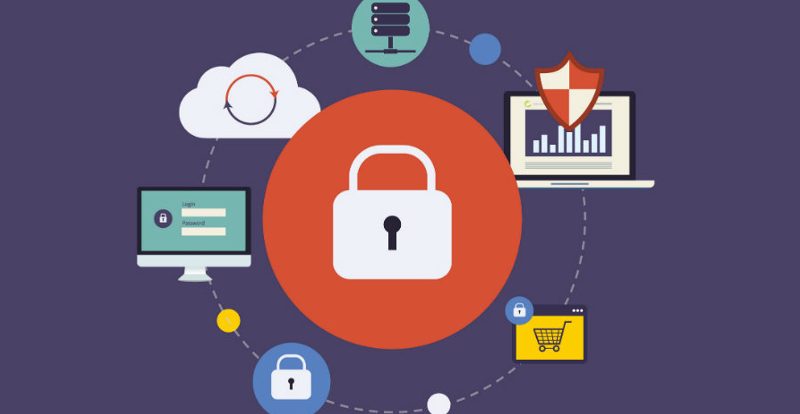
In today’s digital age, protecting your website from cyber threats is paramount. Hackers constantly target websites to exploit vulnerabilities for financial gain or malicious intent. However, you can safeguard your website and its valuable data with proper security measures and practices.
This article will explore essential steps and strategies to protect your website from cyber threats.
#1 Keep Your Software Updated
One of the first and most critical steps to protect your website is to keep all software, including the CMS, plugins, themes, and server, up to date. These updates include security patches that address known vulnerabilities. Regularly check for updates and install them promptly to ensure your website is fortified against emerging threats.
#2 Implement Strong Authentication Measures
Using strong authentication measures is vital to protect your website from unauthorized access. Implement two-factor authentication (2FA) for user accounts, adding a second security layer. Additionally, encourage users to choose strong, unique passwords and consider implementing a password manager to prevent weak password practices.
Utilize SSL Certificates
Secure Sockets Layer (SSL) certificates encrypt the data exchanged between a user’s browser and your website, ensuring that sensitive information remains secure during transmission. Implementing SSL certificates protects user data, enhances your website’s trustworthiness, and improves search engine rankings. Enable the HTTPS protocol by installing an SSL certificate for your website.
Employ Web Application Firewalls (WAF)
Web Application Firewalls (WAF) act as a shield between your website and potential threats. They inspect incoming traffic, filter out malicious requests, and block suspicious activities like SQL injections and cross-site scripting attacks. Consider utilizing a WAF solution tailored to your website’s needs, whether a hardware appliance, a cloud-based service, or a software plugin.
#3 Regularly Backup Your Website
Regular backups are crucial in mitigating the impact of potential cyber-attacks. If your website falls victim to hacking, malware, or other security incidents, having recent backups ensures you can restore your website to a known, safe state. Implement an automated backup system that securely stores backups on external servers or cloud storage platforms. Test the restoration process periodically to ensure backups are reliable.
#4 Employ Robust Password Protection
Weak passwords are a significant vulnerability for websites. Encourage users to choose complex passwords that combine letters, numbers, and special characters. Enforce password policies that require regular password changes and prevent the reuse of previously used passwords. Additionally, consider implementing rate-limiting measures to deter brute-force attacks.
#5 Perform Regular Security Scans
Conducting regular security scans helps identify vulnerabilities in your website’s code, server configurations, and network infrastructure. Utilize reputable security scanning tools to scan your website for potential weaknesses, such as outdated software versions or misconfigured permissions. Address any identified issues promptly to minimize the risk of exploitation.
#6 Implement Intrusion Detection and Prevention Systems (IDPS)
IDPS monitors network traffic, analyzes patterns, and detects potential security breaches or malicious activities in real-time. By implementing an IDPS, you can quickly identify and respond to potential threats, including unauthorized access attempts, suspicious behavior, and known attack patterns, helping to prevent the impact of cyber threats.
#7 Conduct Regular Security Audits and Penetration Testing
Regular security audits and penetration testing provide a proactive approach to identifying vulnerabilities in your website’s infrastructure, applications, and configurations. Engage with professional security experts who can conduct thorough assessments, simulate real-world attack scenarios, and provide recommendations for strengthening your website’s security posture. Regular audits and penetration testing help uncover hidden vulnerabilities and ensure your website remains resilient against evolving cyber threats.
#8 Educate Yourself and Your Team
Maintaining a secure website is crucial to staying updated on the latest security threats. Stay informed about emerging threats and vulnerabilities through reliable sources, attend security conferences or webinars, and participate in relevant online forums. Educate your team and website users about standard security practices, such as recognizing phishing attempts and practicing safe browsing habits.
Key Takeaways
Protecting your website from cyber threats is an ongoing responsibility that demands constant vigilance and proactive measures. By implementing these strategies, including keeping your software updated, utilizing strong authentication measures, employing SSL certificates, utilizing web application firewalls, regular backups, robust password protection, security scans, intrusion detection and prevention systems, and conducting regular security audits, you can enhance the security of your website.
Remember, safeguarding your website is essential for protecting your business and user data and maintaining trust and credibility in the digital landscape. Stay proactive, stay informed, and prioritize website security in your online endeavors.
***
Looking to fortify your website against cyber threats? Trust Cybertegic, a digital marketing agency in Los Angeles, is an industry leader in website development and security. Our extensive cybersecurity and web development expertise makes us uniquely positioned to protect your website from malicious attacks. We use the latest security measures, including robust authentication protocols, web application firewalls, regular security audits, and real-time threat monitoring.
